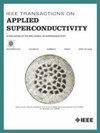基于新型骨架拓扑的未来低温电动飞机快速恢复超导故障限流器:重合闸和重复故障案例
IF 1.8
3区 物理与天体物理
Q3 ENGINEERING, ELECTRICAL & ELECTRONIC
引用次数: 0
摘要
超导故障限流器的恢复特性是其设计过程中的一个关键因素。低阻抗故障后,由于故障时产生的大量热量和由此产生的高于临界温度Tc的高温,SFCL不能突然恢复到超导状态。SFCL的快速恢复将确保电子飞机配电网的快速重合闸和持续供电。在这项工作中,提出了一种基于骨架的螺旋双线SFCL设计,以实现快速恢复。新结构确保了高温超导(HTS)带和冷却剂之间更大的冷却表面积,从而提高了回收性能并缩短了SFCL的回收时间。分析了SFCL的多种故障限流特性,包括限流、电压降、电阻和温度,并与经典的螺旋双线SFCL进行了比较。研究了不同的初始工作温度、不同的高温超导胶带长度和不同的重合闸时间范围。实验结果表明,与传统的螺旋双螺旋螺旋拼接线相比,新型拼接线的恢复时间由2.2 s缩短至0.49 s。这种基于骨架的快速恢复SFCL为未来低温电动飞机的故障管理提供了新的思路。本文章由计算机程序翻译,如有差异,请以英文原文为准。
Fast-Recovery Superconducting Fault Current Limiter Based on a Novel Skeleton Topology for Future Cryo-Electric Aircraft: Reclosing and Repetitive Fault Cases
Recovery characteristic of superconducting fault current limiters (SFCLs) is a critical factor during their design process. After a low impedance fault, an SFCL cannot return to the superconducting state abruptly, due to the large heat generation during fault and the resultant high temperature above critical temperature Tc. Fast recovery of the SFCL will ensure fast reclosing and continuation of power supply in the power distribution network of an e-aircraft. In this work, a skeleton-based design of the helical bifilar SFCL was proposed to achieve fast recovery. The new structure ensures a larger cooling surface area between the high-temperature superconducting (HTS) tape and the coolant, thus enhancing recovery performance and reducing the recovery time of the SFCL. Multiple fault current limitation characterization profiles, including limited current, voltage drop across the SFCL, and resistance and temperature of the SFCL, were analyzed and compared with those of the classic helical bifilar SFCL. Studies were conducted on different initial operating temperatures, different HTS tape length usages, and different reclosing time ranges. The results show that the recovery time has been shortened from 2.2 to 0.49 s by the proposed new SFCL, as compared to the classic helical bifilar SFCL. This skeleton-based fast-recovery SFCL provides new ideas for fault management in future cryo-electric aircraft.
求助全文
通过发布文献求助,成功后即可免费获取论文全文。
去求助
来源期刊

IEEE Transactions on Applied Superconductivity
工程技术-工程:电子与电气
CiteScore
3.50
自引率
33.30%
发文量
650
审稿时长
2.3 months
期刊介绍:
IEEE Transactions on Applied Superconductivity (TAS) contains articles on the applications of superconductivity and other relevant technology. Electronic applications include analog and digital circuits employing thin films and active devices such as Josephson junctions. Large scale applications include magnets for power applications such as motors and generators, for magnetic resonance, for accelerators, and cable applications such as power transmission.
 求助内容:
求助内容: 应助结果提醒方式:
应助结果提醒方式:


